Bon appétit Ishikawa!/Mushroom
The extremely stoic cook Takuya Kataori at long last discovers the Genboku shiitake mushroom (Noto Temari), one of the greatest treasures from Noto. 1
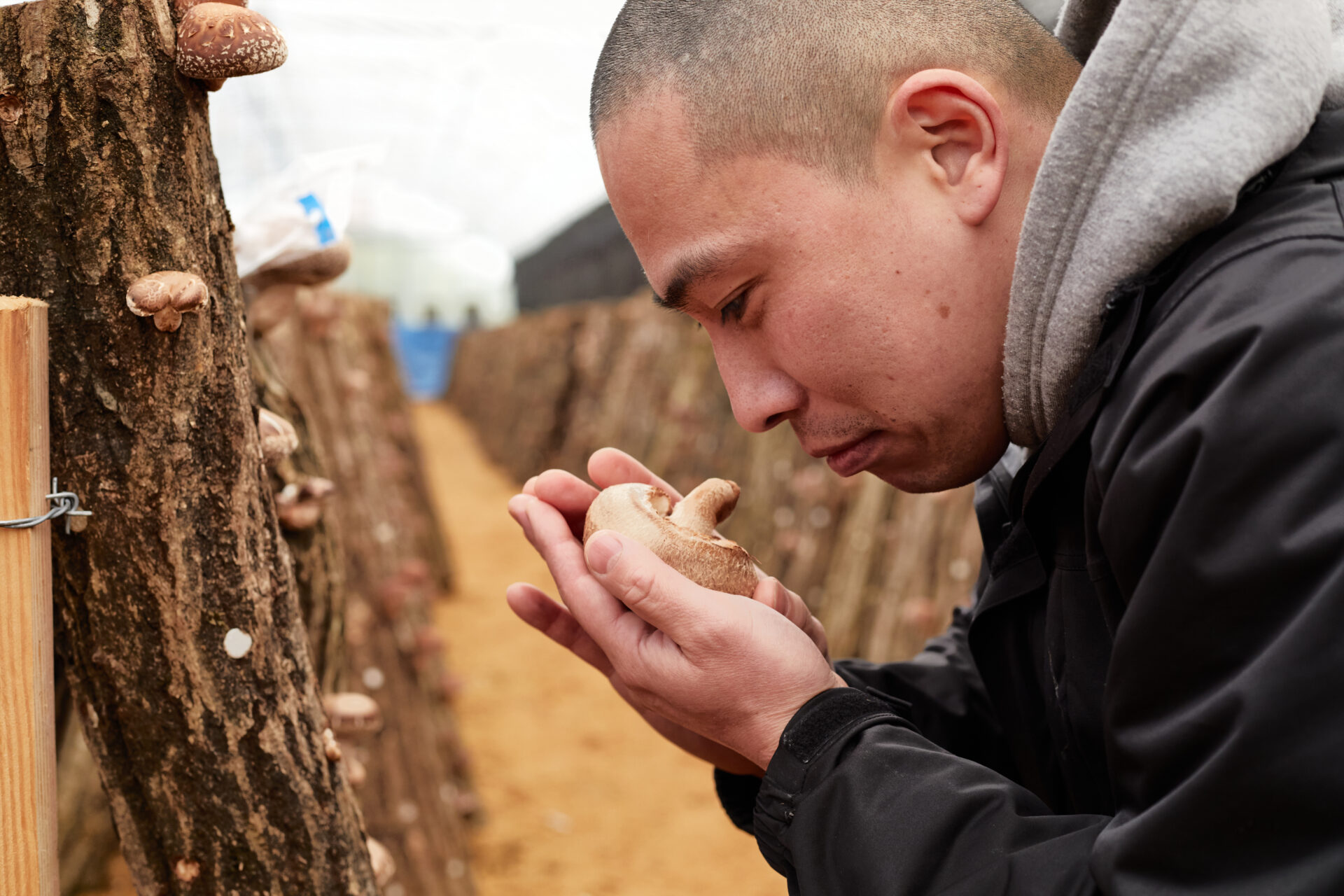
Mr. Kataori constantly searches for superb local Ishikawa food: what is the shiitake mushroom that has attracted him?
The Japanese restaurant Kataori stands by the Asano River in Kanazawa. The owner Takuya Kataori and four other cooks start work before sunrise every day, to prepare the food for this restaurant of just seven seats. Kataori is one of the best restaurants in Kanazawa and even in Japan. They always search for the best ingredients; they go to the sacred Fujinose well in Nanao City to get pure water, visit many seafood markets in Ishikawa and nearby prefectures, and climb mountains to collet wild vegetables and herbs. They always try to obtain the best seasonal ingredients for the day and serve them using simple cooking methods.
It is a Japanese restaurant that practices the policy of local production for local consumption, and is currently attracting a lot of attention. The owner, Mr. Katagiri, has given much consideration to Noto 115, a specialty shiitake mushroom from Ishikawa. 115 refers to the product number among the kinds of fungus cultivated in Japan. Mushrooms grown using the virgin wood of Noto have been appreciated for their excellent taste and texture and have become known as Noto 115. Among the Noto 115 mushrooms, the best quality products are named Noto Temari, and are highly evaluated by cooks.
Mr. Kataori visited the producers of the mysterious Genboku shiitake mushroom “Noto Temari” in Noto.

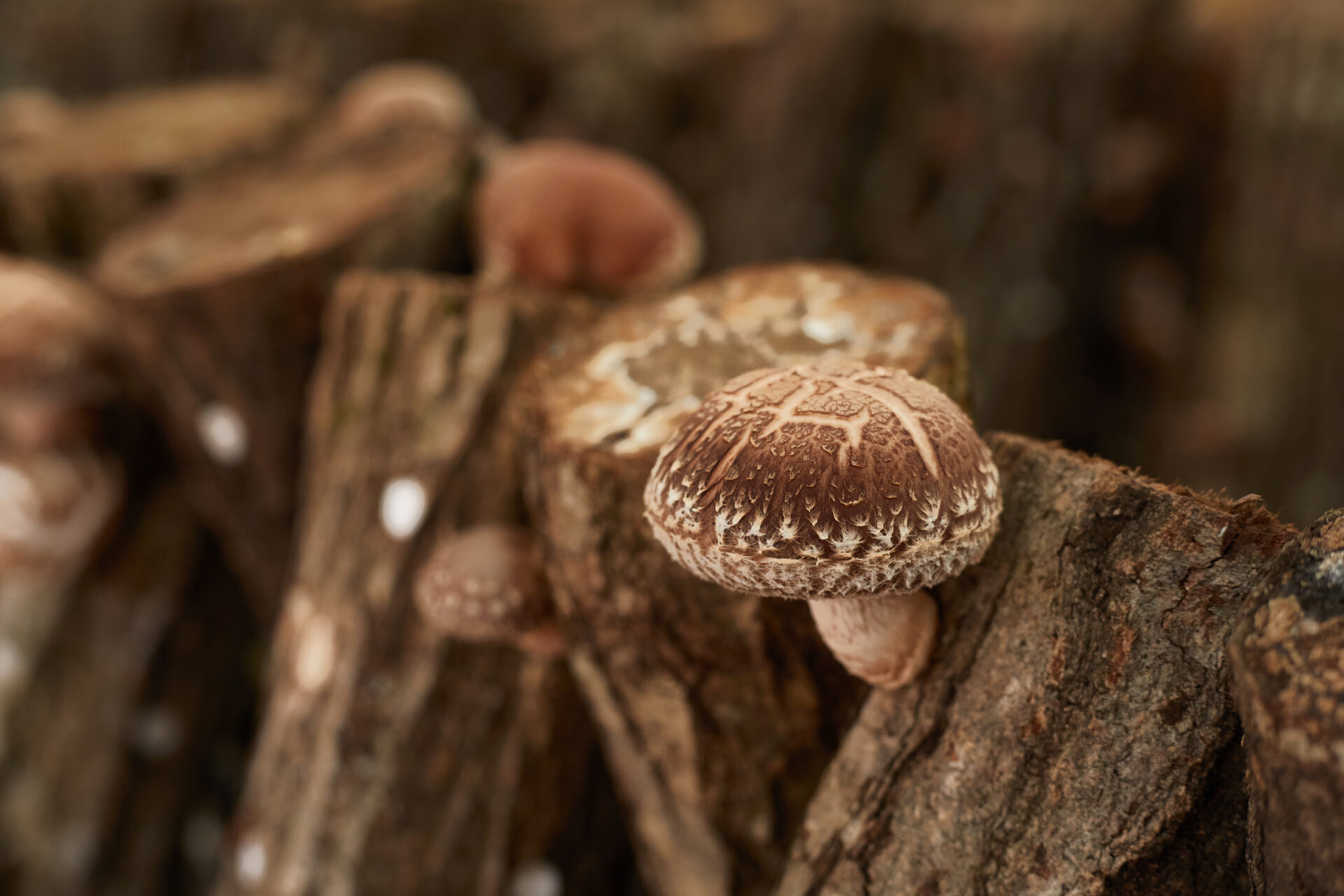
The mushrooms are transferred from mountains to greenhouses, and then returned to the mountains. The mushrooms are produced as a result of extensive labor.
Anamizu Town, facing Noto Bay, is a very popular mushroom production area. Masaji Takamori has been involved in the production of Noto 115 here for 10 years.
Noto 115 are grown using the natural wood of quercus serrata from Noto. There are two cultivation methods: outdoor and greenhouse, with the latter being the most popular since it produces mushrooms of good color and shape, which can be shipped when their market price is high. However, even in the case of greenhouse cultivation, the mushrooms are not grown in greenhouses throughout the year. Logs are cut into specified lengths, and then implanted with fungus and left in the mountains for most of the year. In November, just before the mushrooms start to sprout, the logs are transferred to greenhouses. Harvesting begins after that and continues to the end of March, and then the logs are returned to the mountain. On the day, the harvest was at its peak in Takamori’s greenhouses.
“Shiitake mushrooms react to changes in temperature very sensitively. The pileus opens all at once when the temperature rises, so we should harvest quickly. It became warm suddenly a few days ago, so we are now working in a hurry. The work of covering mushrooms with plastic bags cannot keep up with the mushrooms’ growth,” said Mt. Takamori. When the mushrooms grow to the size of a 500 yen coin, they are covered with plastic bags one by one. The work protects the pileus from damage as well as facilitating the mushroom’s growth by maintaining the internal moisture. They constantly check the mushrooms all over the logs, which are stood in A-shapes, sometimes turning the logs while paying special attention to the promising ones. They continue working earnestly, watering and harvesting.
“The process of covering the mushrooms with plastic bags is the most fun. I work while praying for their growth. Harvesting is not fun at all. The result has already been seen.”
Mr. Kataori picks a well-grown mushroom, holds it carefully with both hands and checks the smell of the lamella. “I felt a cold chill. I somehow feel a chill when I find a really good ingredient. The mushroom was very heavy, containing much water inside, and had the distinguished smell of a Genboku shiitake mushroom. I’m sure it will taste really good when grilled”, he said with a smile.
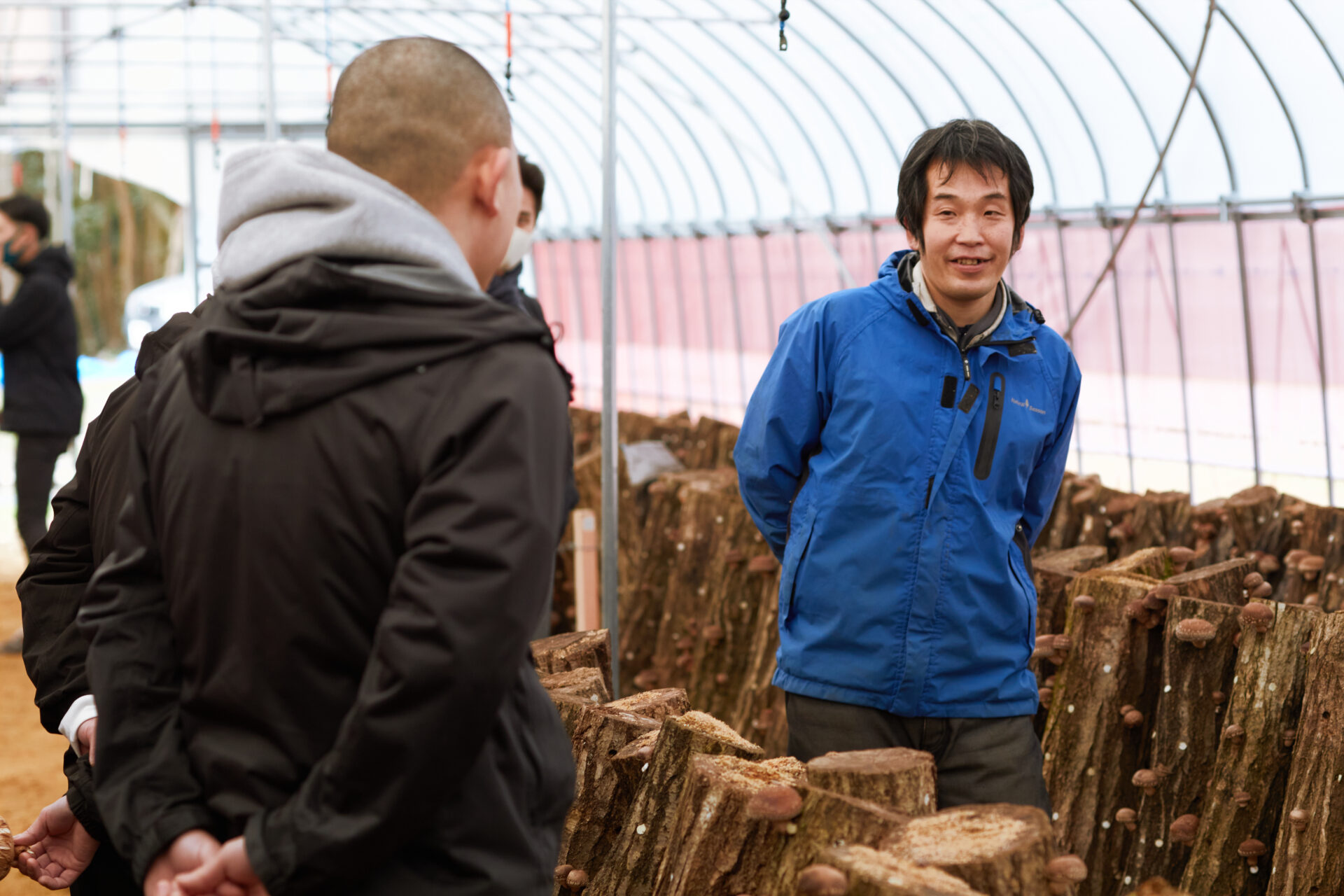
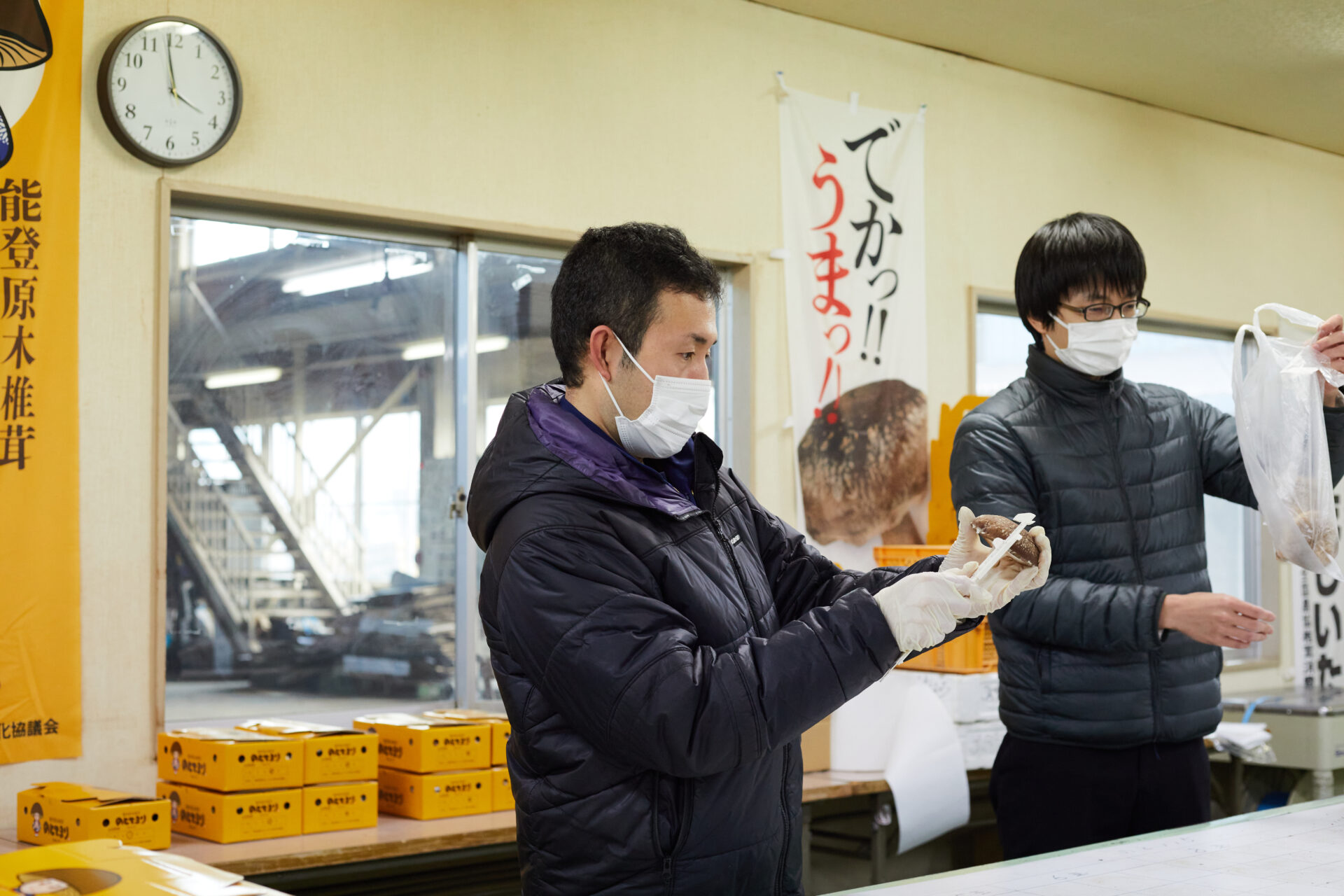
The title of Noto Temari is proof of the highest class that satisfies the strict standards.
Even when grilled, thick and moist Noto 115 do not shrink, and their elasticity, smooth texture and rich flavor can be enjoyed. Particularly large Noto 115 mushrooms with good shape are brought to the JA test room and judged for Noto Temari certification.
The strict standards for Noto Temari are as follows:
‧ Pileus diameter of 8cm or more
‧ Pileus thickness of 3cm or more
‧ Curl length at the tip of the pileus of 1cm or more
‧ Good shape
Noto 115 mushrooms brought to the test room are all excellent specimens. However, only 30% of them are approved as Noto Temari. Even in the case of Mr. Takamori, the master of Noto Temari, only 1% of his harvest is approved as Noto Temari. This fact shows just how rare Noto Temari mushrooms are.
Yoshinori Muroki started farming three years ago, and now manages 5,500 logs in three greenhouses in Anamizu Town. In the harvest season, he works from 7:00am to 7:00pm. Even at the peak of harvest, he can only produce 60 mushrooms each week that are candidates for Noto Temari. It is really difficult to produce Noto Temari. “I have worked for three years, and the harvest is different each year. This year is not bad, but last year was very hard. The harvest is probably influenced by temperature and rainfall, but there are also many unknown factors. I need a lot more experience. I just have to work diligently,” says Mr. Muroki calmly.
Mr. Kataori was impressed by the production site, saying “compared to mushrooms grown in artificial sawdust beds, mushrooms grown in raw wood are much better in taste and smell, and are superior as an ingredient. However, I did not know that raw wood cultivation is this difficult. The big logs weigh 15kg. It is incredibly hard work to move thousands of logs from the mountains to greenhouses, and then back to the mountains. Knowing this fact, I feel more affection for Noto 115.”
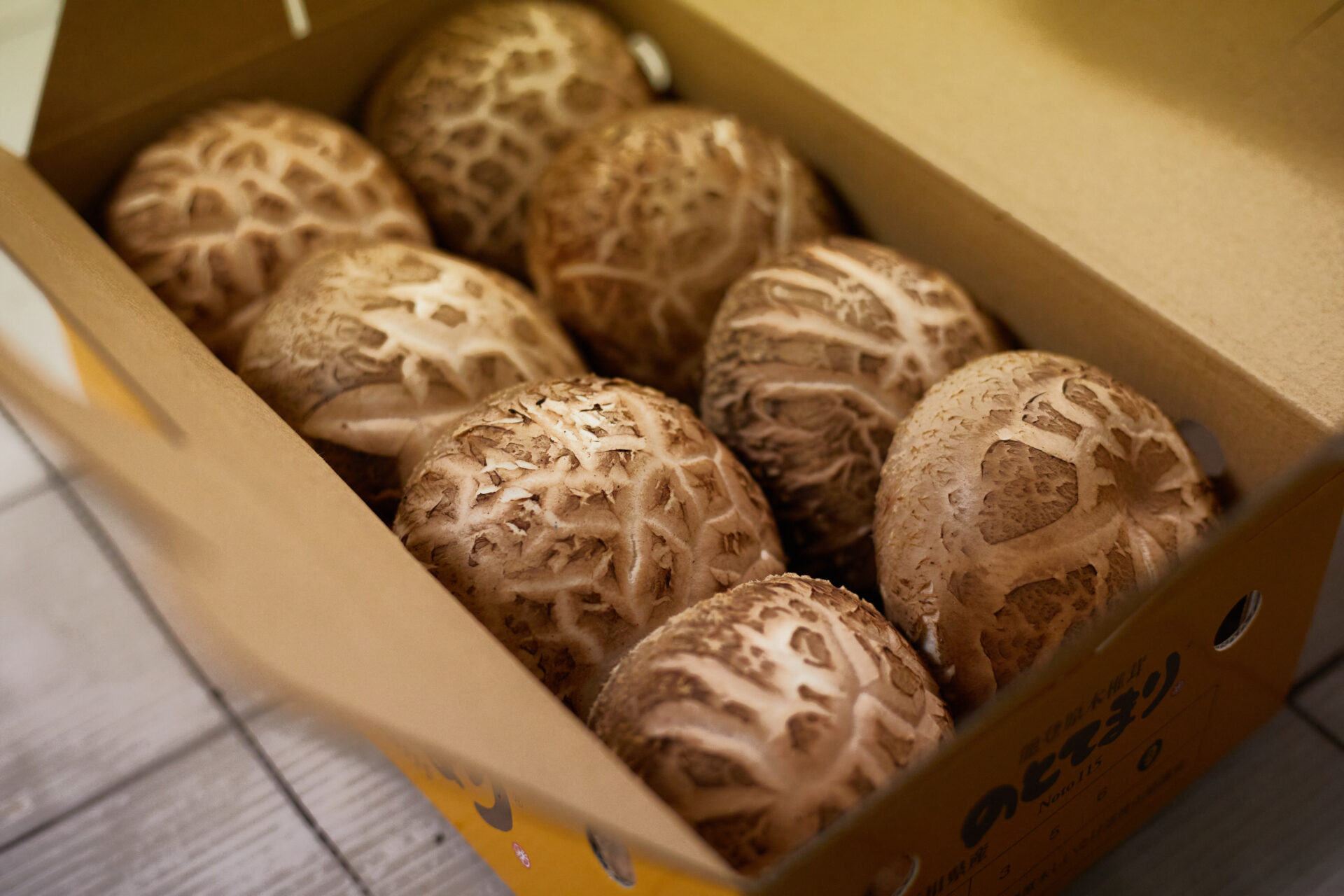
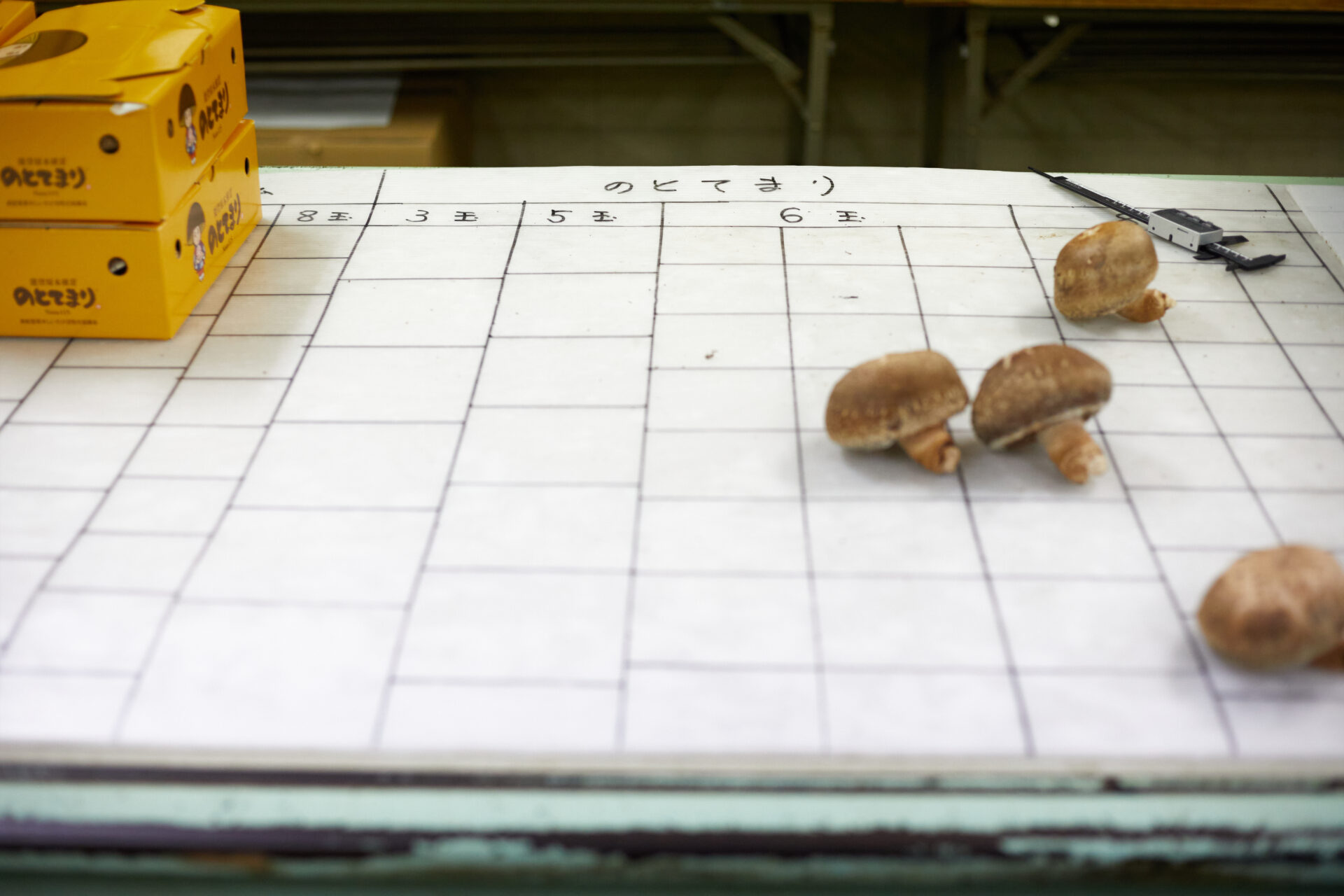
Photographs:SHINJO ARAI
Text:KOH WATANABE
(supported by Ishikawa Prefecture)